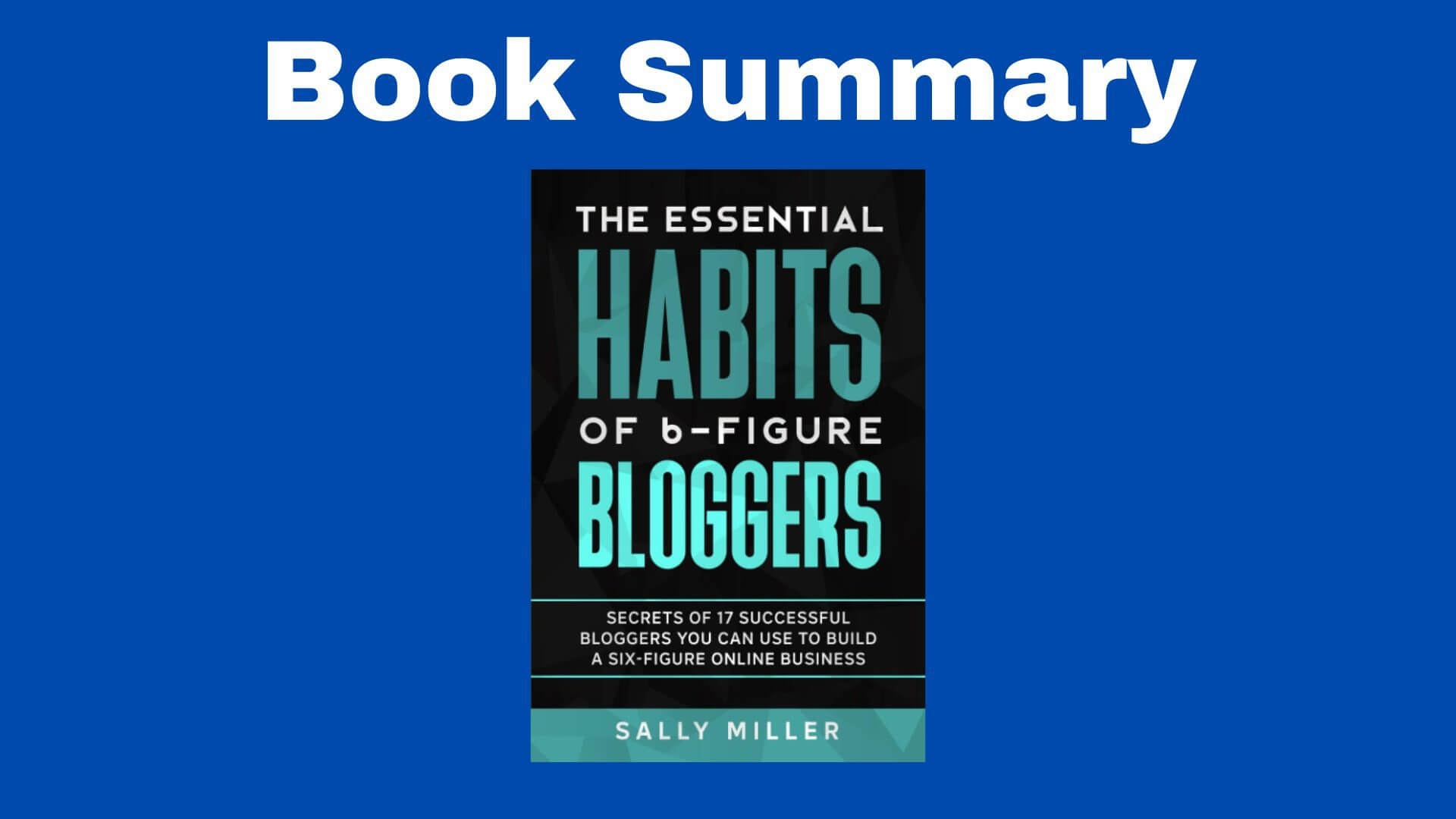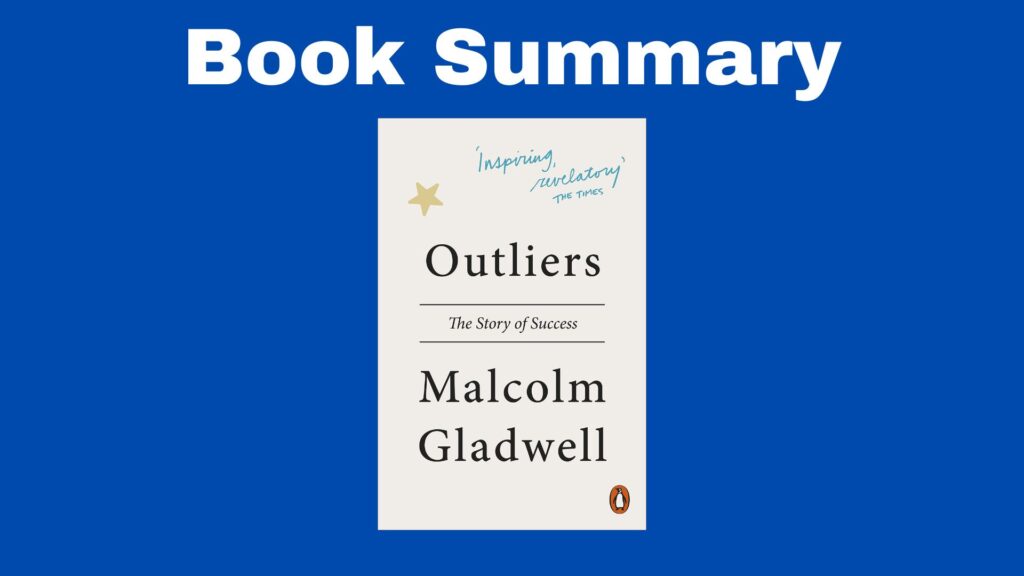The Book in Three Sentences
This is a handbook for bloggers who are interested in monetizing their internet presence. In The Essential Habits of 6-Figure Bloggers, you’ll learn insights from some of the most successful content creators. Web expert Sally Miller interviewed the top bloggers and ask them how they turned their passion into a profitable business.
The Essential Habits of 6-Figure Bloggers Summary
Introduction
Most people who have a blog don’t make a living from it, but some of them make six- or seven-figure incomes. So what’s the difference between those who make a lot of money and those who don’t make any money? There’s no unique path to success, but there’s a framework that leads to great results and it involves three habits.
- Habit 1: Act with Purpose. This involves setting goals and carrying out a plan to attain them.
- Habit 2: Create Systems for Success. Obstacles will come up, so you have to create a system that lets you do the most essential tasks.
- Habit 3: Believe in Yourself. Accept the fact that you’re responsible for your results and believe that you can achieve your goals.
Section One: Habit One: Act with Purpose
Chapter 1: Act with Purpose
This first habit has two parts:
- There’s a personal mission and you must set goals to achieve it.
- Use strategies to achieve goals and get rid of the activities that don’t align with your mission. This means that you shouldn’t hold on to things that don’t work. Focus on something that leads to the results you want instead.
Your blog has to have a purpose, so your personal mission must be clear. There are five steps to do this:
- Be clear about what matters.
- Have a mission statement. What do you want to achieve? How will it benefit others?
- Have a guiding principle. These are the rules that lead your decisions.
- Have meaningful goals. These goals keep you on track and motivate you.
- Review said goals.
To be successful, you have to have a strategy. The problem is that there’s too much information and there are too many disciplines to take into consideration, including online writing, social media, marketing, and so on. Therefore, you can spend too much time learning instead of creating. The solution is to try, test, and tinker until you find a strategy that works for you and your blog.
There are three main components to your blog strategy:
- A defined purpose and audience
- A monetization strategy
- A marketing strategy
Whatever you implement, do it one at a time.
Monetization Strategies
- Affiliate Marketing: you promote a product or service from someone else and you receive a commission when someone from your audience makes a purchase.
- Product Creation: you sell your own products, such as ebooks, downloadable items, courses, or videos.
- Offering Services: these are services you offer, such as freelance writing, graphic design, coaching, web design, editing, or social media management.
- Advertising: these are the ads you put on your blog.
- Sponsored Posts: you can partner with brands and they pay you to write a post that has a link to their product.
- Hosting Events: these are multi-person events such as seminars, online summits, meetups, and workshops.
Marketing Strategies
Once you figure out how to monetize your blog, you have to attract more visitors
- Search Engine Optimization (SEO): these are the keywords (the words that people type into search engines) that help users find your site. As you might have guessed, the longer the keywords, the more specific they are. These are called long-tail keywords which is where new bloggers should focus on.
- Social Media: social media can help bloggers find a large audience, but this isn’t always a given because it depends on many variables. Once you’ve found a platform you like, you have to experiment with different kinds of content, look at the data and make adjustments, and use scheduling tools, and child relationships.
- Other People’s Audiences: connect with other bloggers to share ideas with their audience and invite them to your blog. The most common way to do this is through guest posting, but you can also connect with new people on podcasts or other projects.
- Connections: there are numerous ways to collaborate, such as online summits, webinars, books, and more.
- Paid Advertising: this is for people who’ve monetized their blog successfully. There are many options, including Facebook, Google Adwords, YouTube, Pinterest Ads, and more.
- Email Marketing: building an email list is extremely important. Unlike a social media following, an email list is yours. Just focus on attracting ideal followers and strengthen that relationship by giving them value.
Chapter 2: Michelle Schroeder-Gardner
Michelle Schroeder-Gardner is the founder of the personal finance site Making Sense of Cents. Her mission is to help readers save money. After a year of starting the site, she was making $8,000 per month. She does content batching which means that she does all the writing at once and then takes time off to focus on other things. She encourages others to take breaks from time to time and have a good work-life balance.
Chapter 3: Monica Froese
Monica Froese helps mothers build online businesses at Redefining Mom. She advises people to communicate with their partner to work and schedule a “staycation” at hotels. Finally, Monica suggests avoiding chasing trends and doing things your way.
Chapter 4: Holly Reisem Hanna
Holly Reisem Hanna is the founder of the Work at Home Woman website which helps women find remote businesses from home. She “block schedules” her work to avoid burnout and explains the importance of having a newsletter because algorithms might change and good sources of traffic go away.
Chapter 5: Dave Stuart, Jr.
Dave Stuart, Jr. is a high school teacher by day and a blogger whenever time allows. He says that posting twice a week has helped him both financially and intellectually, so he’s committed to his schedule.
Chapter 6: Terra Dawn
Terra Dawn owns the Uncork Your Dork blog and a membership site called Wham! Bam! Business Plan! Early on, her problem was focusing on the outcome instead of the small steps to get there. She had goals but no focus, so over time, she learned how to look at the bigger picture and found success. She also says planning her quarters (thinking about the social media, product, blog, and group content she’ll be posting on a given quarter) gives her clarity and she produces a much more focused message.
Chapter 7: Christina Scalera
Christina Scalera is an attorney who founded The Contract Shop, an online store that sells contract templates. To those bloggers who’re struggling, she recommends writing about the things that people want.
Section Two: Habit Two: Create Systems for Success
Chapter 8: Create Systems for Success
Having goals that are meaningful and a strategy to carry them out are the basis for success. Yet most people have trouble meeting their goals, usually because there’s a problem with their strategy. Systems are important and if you don’t have them, you must rely on willpower to do things. This is dangerous because you can run out of willpower and take the easy way out instead of doing what matters. By creating a system, you don’t rely on decision-making or willpower to achieve goals.
There are three types of systems:
- Accountability Systems: since most bloggers work for themselves, they don’t have a boss telling them what to do and they can be tempted by distractions. Some accountability systems include having an accountability partner, joining a mastermind group (these are people who help each other achieve goals), and sharing your goals.
- Execution Systems: these are about automating important tasks to make sure they get done. Examples include creating a content calendar, outsourcing tasks to a virtual assistant, planning your time in advance, batching related tasks, adopting a morning ritual, using automation tools, or creating financial systems.
- Tracking and Improving Systems: this helps you observe your progress and pay attention to the results. Tracking data can help you do this, but don’t obsess over numbers, especially if they don’t relate to your goals. You can block out one day of the month to analyze numbers and compare them to past periods.
Action Steps:
- Determine the essential activities of your business
- Decide the systems that help you stay consistent. Have systems for accountability, execution, tracking, and improvement
- Implement one system at a time
Chapter 9: Gina Horkey
Gina Horkey is the founder of Horkey Handbook, a website that helps people find a suitable virtual assistant. Her secret to success is showing up and doing the work every day. She uses time blocking and a “model week” to organize her schedule. Her biggest obstacle was that she kept waiting for things to be perfect to start.
Chapter 10: Meera Kothand
Meera Kothand is an email marketing specialist who’s published two best-selling books: The One Hour Content Plan and Your First 100. Her Routine includes sprints (focusing on a project for a short period of time) and batching (grouping similar activities together to save time and resources).
Chapter 11: Kelly George
Kelly George works in the homeschooling niche and studies nursing in her free time. Focusing on the most important task has had the biggest impact on her business. She wishes she had focused on SEO and affiliate marketing from the beginning. The main obstacle she faced was what to focus on and how to do it. She now avoids that by committing to a decision for at least six months. Once the important things get done, the details are unimportant. Kelly advises new bloggers to do what works and wait for things to work out. Experimentation is part of the game.
Chapter 12: Courtney Slazinik
Courtney Slazinik used to be an elementary school teacher, but she now has an online business called Click It Up a Notch where she has all kinds of information about DSLR cameras. She does a “brain dump” at the beginning of each week which means that she writes down everything she can think of. Then, she uses that list of tasks she came up with and organizes them according to their priority. Usually, she chooses three items a day. Courtney values quality time with her family and places boundaries on her time. Her secret to success was picking three tasks per day and tackling them.
Chapter 13: Tasha Agruso
Tasha Agruso owns Designer Trapped in a Lawyer’s Body, a home decoration blog. If she had to do it all over again, she’d start growing her email list as soon as possible. Tasha believes that educating yourself is paramount, so invest in courses and ebooks to be successful.
Section 3: Habit 3: Believe in Yourself
Chapter 14: Believe in Yourself
Reaching your full potential involves overcoming internal obstacles (fear, self-doubt) or external obstacles (health issues, financial problems). This third habit is about adopting the right mindset to do so. We all tell ourselves stories about money, work, and success, and changing those beliefs can help you achieve your goals.
- Give Up the Blame Game: accept responsibility for your actions. In other words, have faith that you obtain what you deserve. Don’t blame the current state of affairs; use this to your advantage. Having a positive attitude works well and avoid thinking about what you can’t change, but what you can.
- Lean into Your Fear: fear is likely to come up at some point and you’d do well to lean into it. Stepping outside your comfort zone is a great way to overcome fear.
- Connect to Your Why: the reason behind your goal is your why. Record your motivations, prioritize the ones that are most important to you, and discard the ones you don’t feel connected to. Review your motivations on a daily basis.
- Write Affirmations: an affirmation is a mantra or phrase that you repeat yourself often to reprogram your brain., You can use affirmations to reverse negative stories and to state goals as if they’d already happened.
- Create a Vision Board: a vision board is a collection of images that reflect your goals. This can be a physical collage or a secret Pinterest board.
- Find a State of Flow: never focus too much on your goal because you’ll forget about the process. Find a state of flow, this is becoming so involved in the task at hand that you lose track of everything else, including time. To find flow, you must concentrate on a single task and lose yourself in it.
- Meditate: meditation can help you be present, overcome fears, and deal with stress. Guided meditations are great for beginners and a lot of them are available for free.
- Practice Gratitude: this involves paying attention to the things you’re thankful for. Ideally, you should practice gratitude daily.
- Create Boundaries: people who work online have trouble making time for other things. Setting boundaries gives you clarity and lets you focus on other important things.
- Surround Yourself with Positive People: when you surround yourself with people who are supportive, you’re more likely to succeed. Don’t complain or engage in negative talk.
Chapter 15: Nina Garcia
Nina Garcia is the woman behind Sleeping Should Be Easy, a blog that helps moms who are overwhelmed. She suggests inexperienced bloggers in need of some money to serve their readers.
Chapter 16: Allie Bjerk
Allie Bjerk is a success coach who helps entrepreneurs work on having intentional lives. She owes her success to focusing on being intentional with her time. She believes bloggers should fail fast and improve faster.
Chapter 17: Kristin Larsen
Kristin Larsen is the owner of Believe in a Budget, a blog that helps people have a side hustle and save money. She owes her success to continuing her education and focusing on one subject at a time. The best habit she acquired was achieving a work-life balance. If she could start again, she’d focus on growing her email list. She feels that focusing on analytics in the early stages of blogging is a waste of time.
Chapter 18: Lena Gott
Lena Gott is the owner of What Mommy Does, a blog where she writes about play dates, budgeting, and family finance. The action that had the biggest impact on her business was starting a mailing list. According to Lena, struggling bloggers should focus on what works, and ignore what doesn’t. Also, invest in education.
Chapter 19: Cat Leblanc
Cat Leblanc is a business strategist who works with online entrepreneurs. She believes the early stages of blogging should be all about experimentation, so do it and be willing to pivot quickly if you have to.
Chapter 20: Miranda Nahmias
Miranda Nahmias is a marketing expert. Publishing consistent content had a big impact on her business. She suggests people focus on email marketing from the beginning.
Conclusion
There isn’t one path to success, so build a business that works and do it around your strengths.




